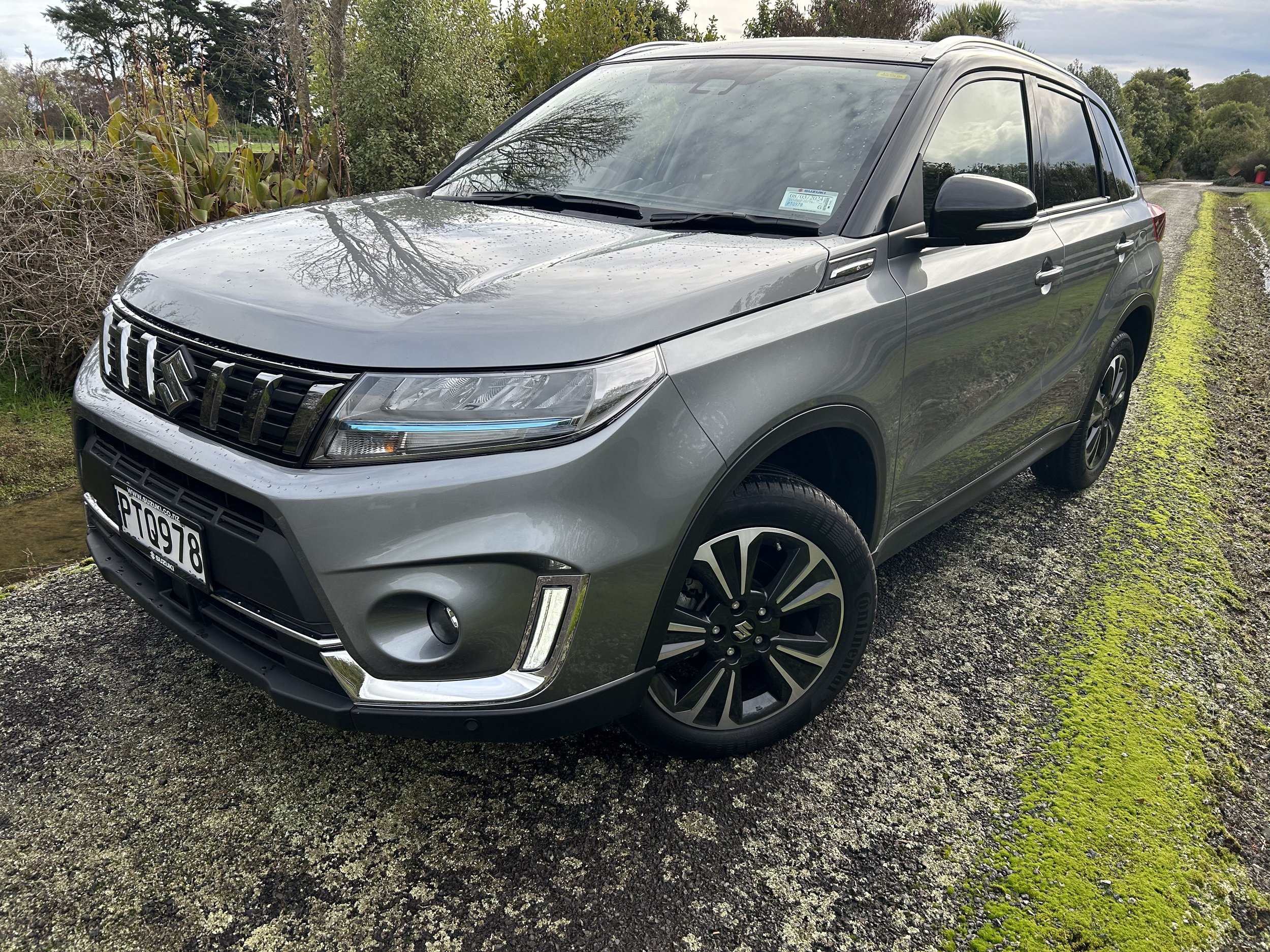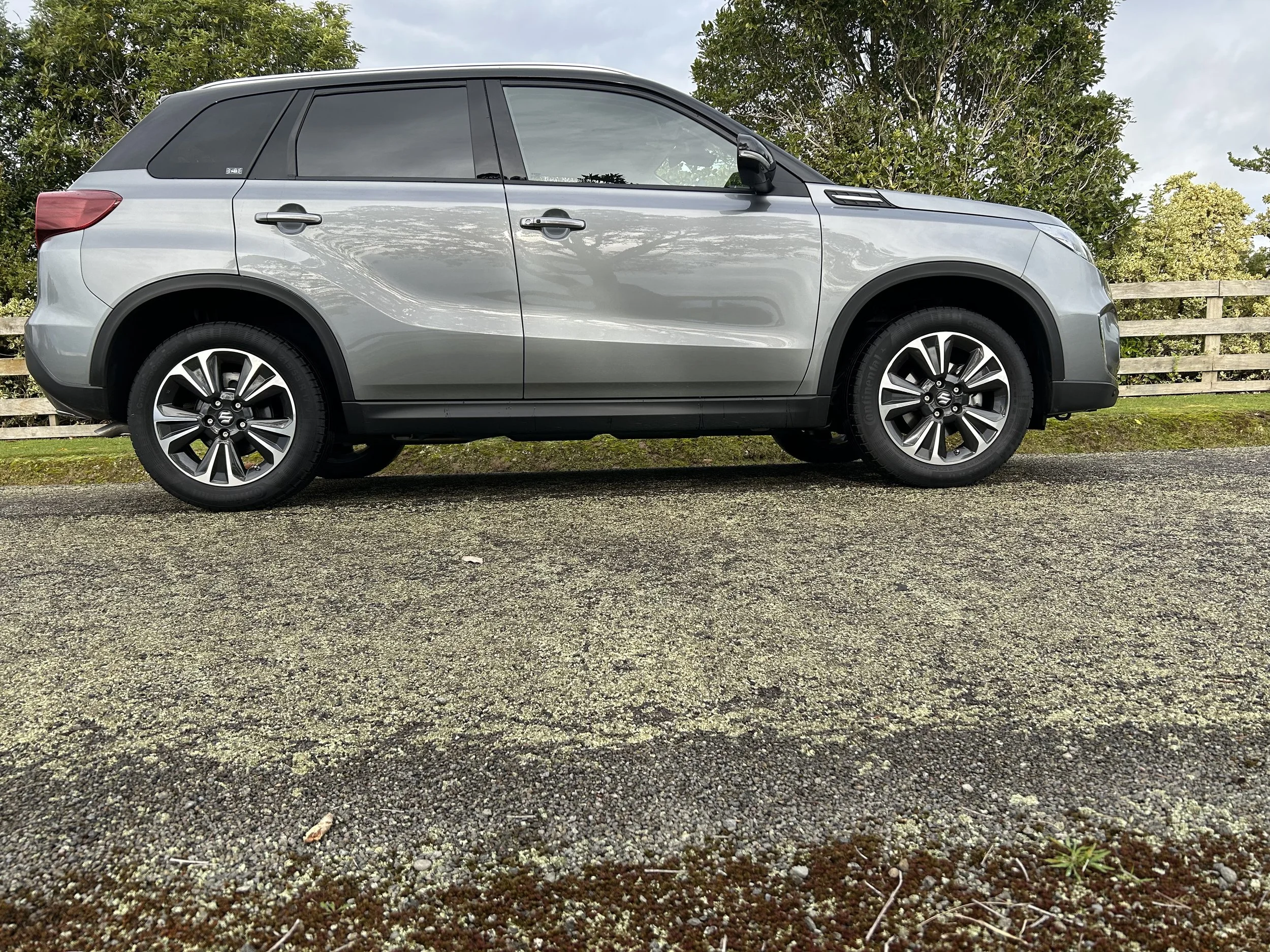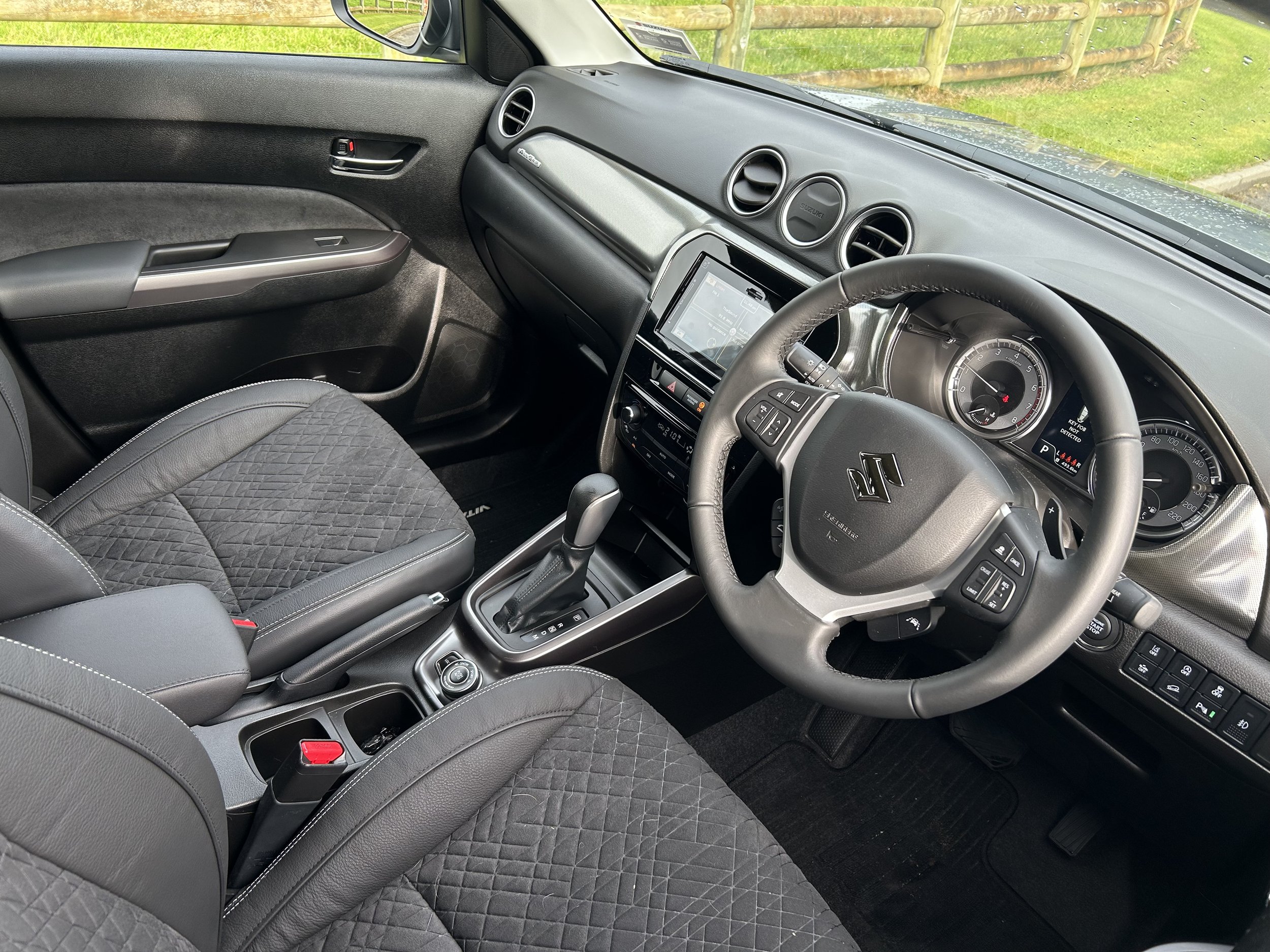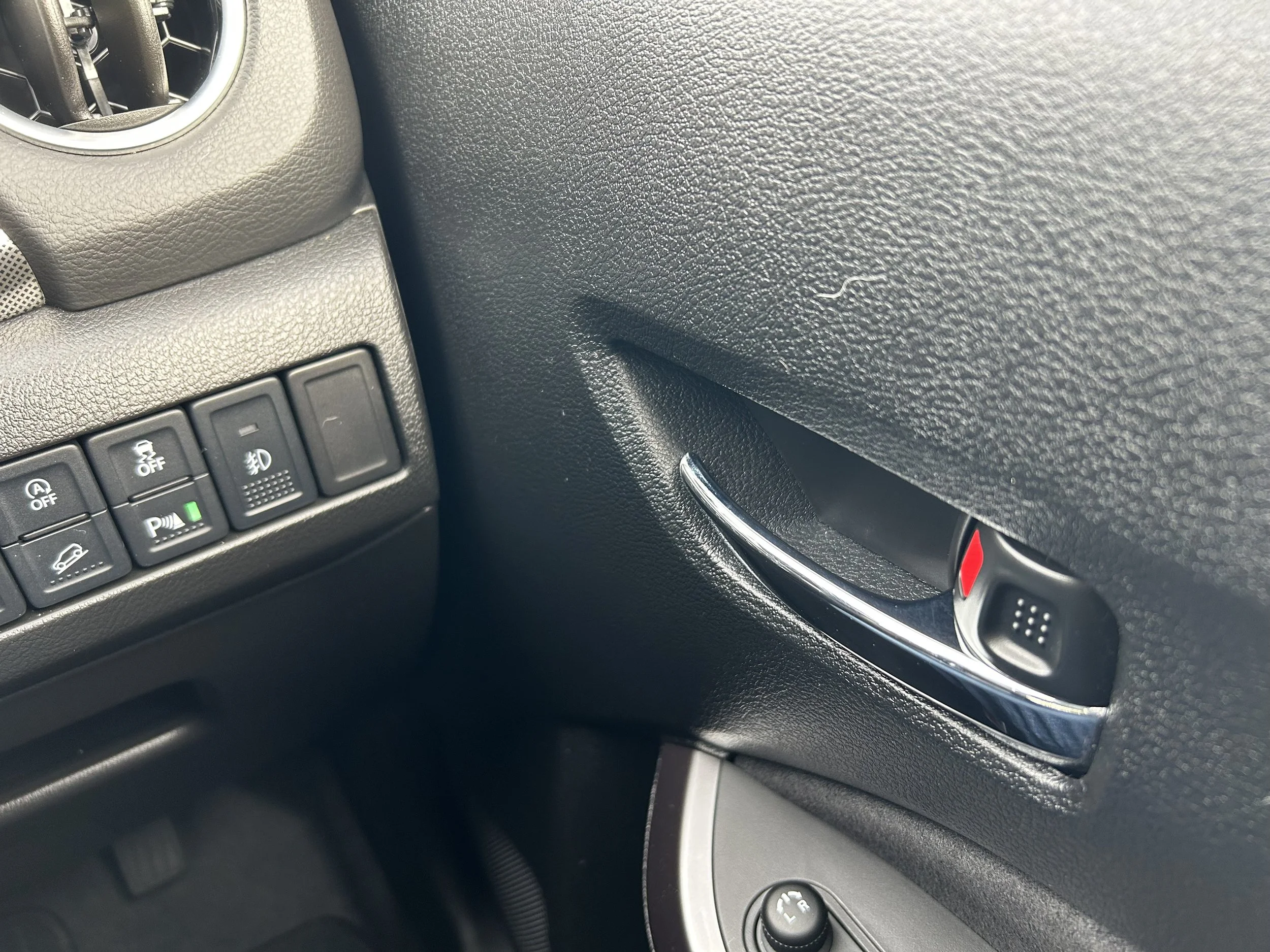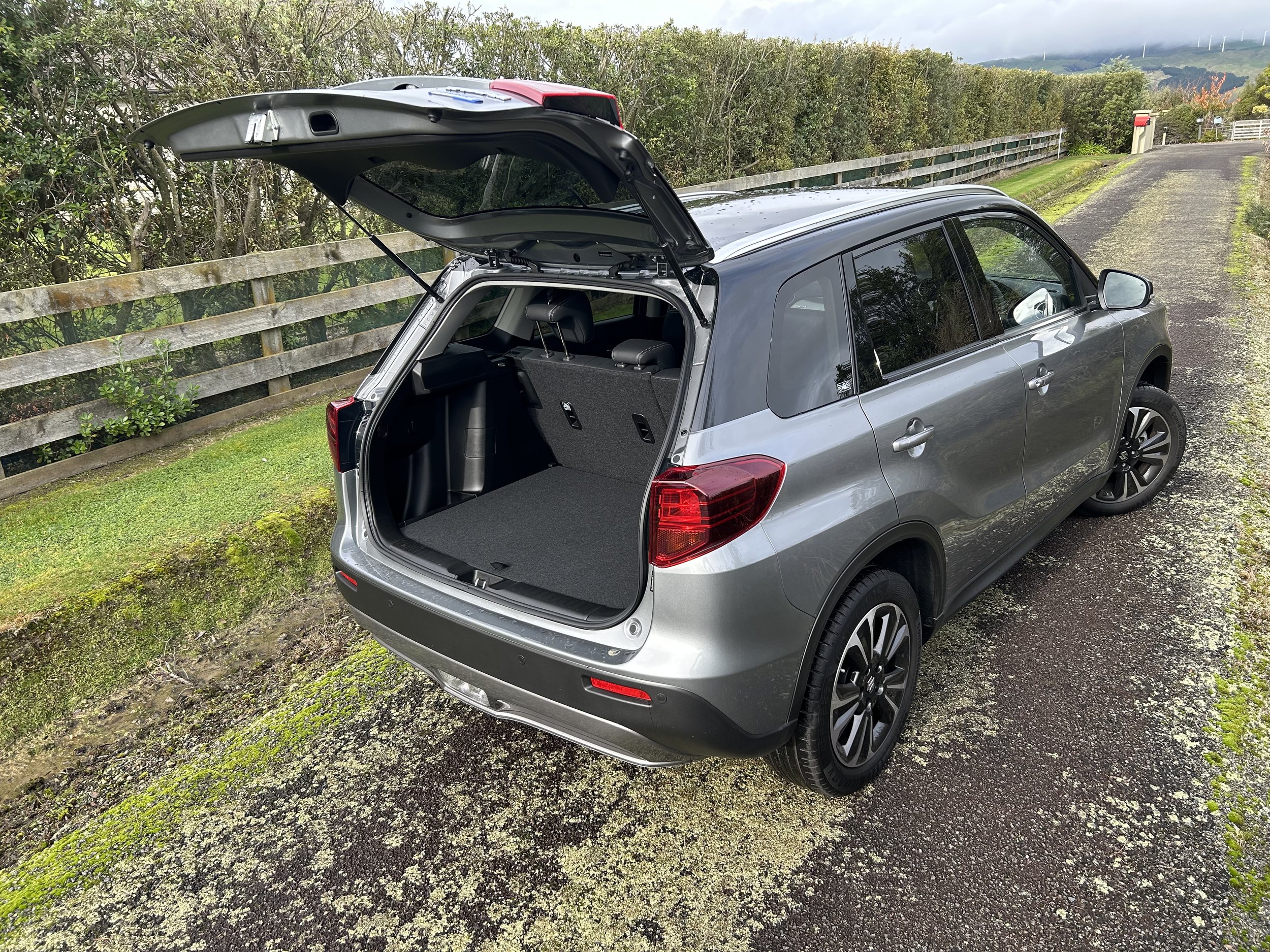Suzuki Vitara JLX Allgrip Hybrid roadtest review: It’s a small gain
/The mildest electric assist Suzuki offers for this classic is the front-line weapon against one of the world’s toughest emissions standards. How does it fare?
Price: $44,990.
Powertrain: 1.4-litre Boosterjet with 48 volt mild hybrid, 95kW/235Nm, six-speed transmission, four-wheel-drive, 6 litres per 100km overall cited economy, 136 grams per 100km CO2 (WLTP-3).
Vital statistics: 4175mm long, 1775mm wide, 1610mm high, 2500mm wheelbase; 375/700 (seats raised, lowered) litres luggage capacity, 215/55 R17 tyres.
We like: Suzuki toughness, strong standard equipment, effort to reduce CO2.
Not so much: Hybrid seems to make little difference; interior’s dated ambience.
OF all brands caught on the ‘wrong’ side of Clean Car legislation, one deserving sympathy for doing all it could and finding it’s still not enough has to be the market’s little battler.
Squeezing the most from everything is something Suzuki is particularly savvy at doing, not least when that happens to be a litre of fuel. Its cars are, by and large, famously thrifty.
Yet, as clean air legislation’s naming makes clear, Clean Car’s measuring stick is less about economy than CO2 count.
There’s low … and then there’s low enough to maintain Green recognition. With a scheme all about percentage improvement from a baseline, with weight factoring in, it’s a tricky landscape for all. Including a brand specialist in small, frugal and relatively clean engines, but lacking the ace card of an electric car.
Sitting pretty not just with CCD, but also another test the public likely knows less about (but should, because it can also influence how a car prices), the Clean Car Standard, is a tough challenge.
In its original format, Clean Car Discount meant a lot of Suzuki cars won rebates and that, in turn, sparked up sales. But now the CO2 requirement has lowered. From July 1, most no longer earn cheques, some feel penalty and several, including the car on test, fall into the now much-narrower no man’s land between the two zones.
Vitara is well established as a reasonably budget-priced compact crossover and though it’s almost a decade old, still looks smart. But it is also not short of rivals and on engine technology side, was stumbling in our environment.
To address this, Suzuki NZ has wangled a hybrid edition developed for Europe. One of several, actually. Japan dictates we have the mildest, wedding the long-serving 1.4 turbocharged 'BoosterJet' petrol engine to a 48 volt-aligned small electric motor.
In technical terms this uses what’s known as an ‘Integrated Starter Generator’ powered by an uprated electrical system and battery to expand the stop-start operation and offer a small electric boost to the engine under way. It can’t power the car on the electric motor alone, but Suzuki attests it to be at least 15 percent more economical than a comparable regular Vitara while also boasting up to 18 percent lower C02. The hybrid engine, like the regular type, asks for 95 octane or higher petrol.
So there’s obvious usefulness. And as the regular 1.6 and 1.4 petrols are leaving the market, it’s the future. By 2024, Vitara will be pure hybrid; same car we’ve long known, but with a new heart.
It landed in March with rebate eligibility of $1614 for the JLX Allgrip all-wheel-drive auto here, $2181 for a front-drive equivalent and $2851 for a base JX manual. But that’s proven short-lived. Talk in the air then of CCD change has realised. The impact from July 1 isn’t as onerous as local boss Tom Peck imagined - he feared the drivetrain would head into the penalty box - but from the start of next month the Government cheques stop.
That alters the spending scenario. Hybrid carries a premium and, because this one comes from Hungary (hence why the indicator and wiper wands are reversed), there’s also a shipping cost that’s trebled post-covid.
End result is that the three hybrid derivatives hold premiums of between $3000 to $6000 over the fully petrol-exclusive 1.4-litres that in the past year have captured most Vitara buyers.
What chance savings on the road will compensate for the bigger outlay? Slim, sadly.
Under Clean Car, it’s sometimes said that every little bit counts. In this case, the 'little bit’ is small indeed. The fuel burn return from test suggested any gain is much less dramatic as can be found with the fully petrol and petrol-electric versions of the class-dominant Toyota RAV4. With Suzuki’s car, on this test, it was a 0.1 litre per 100km advantage to the new. Does that warrant spending all that premium when regular 1.4 Vitara is still available?
Starting with a full tank, the car clocked 452 kilometres, of which much comprised a continuous open road run, mainly two up, always with normality in mind; so driving to conditions and posted limits.
There was no expectation of seeing the WLTP-3 scale for economy that pins it to between 5.6 litres and six litres per 100km. As ‘real world’ as it strives to be, WLTP is still a lab test whose outcomes are easily upset by any number of actual everyday driving conditions. Surface type, the merest breath of wind.
Prior to the open road run, the car clocked 40kms and, unsurprisingly, the fuel gauge needle was still over the ‘F’. Average fuel economy then was 7.6 litres per 100km and the trip computer figured range of 536 kilometres.
At conclusion of the big drive, the fuel tank was three quarters depleted, range of 195km was predicted and average economy was 6.8L/100km, which it hit halfway through the drive and resolutely stuck to from thereon.
A 0.8L/100km improvement from the drive is worthy, but it’s still 0.8 short of the optimal expected of the hybrid and, also, just 0.1L/100km below the factory-cited economy for a regular 1.4-litre Allgrip auto, according to product data.
Let’s be generous and allow for possibly the fully petrol car also performs to the same variance. If that is the case - and it’s all just theory - then the fully petrol model might have burned fuel in the low to mid 7s for this same trip.
Let’s accept, too, that where the hybrid will surely have advantaged was in CO2 output. How close it comes to the factory figures I cannot say. I don’t have equipment to test this. Officially, the hybrid outputs 136 grams per kilometre versus 161.
Moving on from that, the Boosterjet with a bit of electric assist is a nice thing to sit behind. The fully fuel-reliant one has always seemed Suzuki’s best engine. Here it’s a bit smoother and, though power hardly alters, the 15Nm lift in torque makes nice imprint.
Zero to 100kmh in a laidback 9.5 seconds nonetheless reminds this enhancement isn’t about speed, all the same. It’s an amenable engine rather than an electrifying one.
Suzuki says the rework required adjustment of the variable valve technology plus a different turbocharger, specified to give better efficiency and faster spooling-up response.
Maximum fuel pressure increases to 350 bar and it gets automatic stop/starting when the vehicle is at a standstill to saves fuel while the lithium-ion battery powers all electrics. The Integrated Starter Generator also is supposed to help power the additional electrical components and systems like climate control air conditioning, safety features and smartphone connectivity when you’re cruising, while in turn it recharges off the braking. I guess it’s all making a difference. Going by my experience, it’s not a huge one.
How the hybrid impacts on the off-roading side is not obvious, but conceivably it need not. While this fourth generation’s uplift to a monocoque has helped it better embrace the city-slicker lifestyle, this is a car with surprisingly serious off-roading ability. Not quite the mountain goat that the Jimny is, but good enough to take on tricky terrain with confidence. It certainly punches above its weight on gravel, the strut front, torsion beam rear suspension having no issue with road imperfections.
On seal or beyond, the Allgrip system doesn't wait until loss of grip at the front wheels is detected before intervening and sending more engine torque to the rear axle. Instead, it 'anticipates slippage based on road surface, throttle opening position, steering angle and other factors'. In its default, the Vitara sends its power to the front wheels unless otherwise required, in a bid to reduce fuel consumption.
There’s a Sport mode under which the throttle response sharpens up and the power steering assistance adjusts, while the four-wheel drive alters its priorities.
On an interesting road you'll discover a decent chassis and steering that’s well-weighted and communicative. It isn't the last word in handling and driver entertainment, but is far from disgraced. In that respect, it feels modern.
In another, it does not. The car’s cabin has always tended toward the robust. Yet while functionally good, with basic but comfortable front seats and a decent enough driving position, helped by a reach-and-rake adjustable steering wheel, it struggles on interior quality and ergonomics.
Materials with a hard, shiny finish are hugely knock resistant, but they hardly lend an aesthetic imprint.
While the main analogue instruments are fit for purpose and in tune with the car’s nuggety theme, the digital displays are a bit half-baked. The button altering the displays of the small screen ahead of the driver that offers most useful information about the hybrid’s state requires an awkward reach. The central touchscreen is also fiddly and the graphics are old-hat. At least you can plug in your phone and use Apple CarPlay or Android Auto, which does help.
Older packaging techniques also involve. Being pertly dimensioned has benefit for nipping about, and makes it a handy accomplice for urban work, but being narrow car means it’s also cosy with a full complement. There’s enough head and legroom to house four tall adults comfortably, but the narrowness of the middle seat, suggests a fifth might only be considered in emergencies. Boot capacity is modest.
There’s plenty of standard safety equipment, all the same, with an active cruise control, lane departure warning, traffic sign recognition, two ISOFIX points in the rear seats, a tyre pressure monitoring system, curtain airbags and a driver's knee airbag.
Updates on this side the Vitara keep pace with the latest safety tech, yet the car’s age is about to influence its safety rating. Vitara was tested by EuroNCAP back in 2015, a year before it came on sale to NZ, and it scored an impressive full-house five-star rating. However the safety goalposts have moved considerably since and that score retires at the end of the year. From thereon, it will have a Vehicle Safety Risk Rating, a totally different deliberation.
Clean Car has compelled many brands to re-evaluate their products and, as result, we’re seeing a lot more hybrid powertrains, including plug-in choice, in this price range. If you don’t want all-wheel-drive, there are even a couple of like-sized full electrics.
The skill required to integrate a hybrid into a well-established product deserves a nod. As much as it has carved out a comfy life as a small car specialist, Suzuki has to spend every dollar prudently.
Whether this cleverness is enough for the Vitara when fresher rivals could be seen to offer the same or better in more appealing packages is a matter worthy of consideration. But this is a car that has always survived on its honesty. At least this update keeps one of the longest-lived (dating back to 1988) model names in the fight. For ardent fans, that’ll likely be all that matters.

